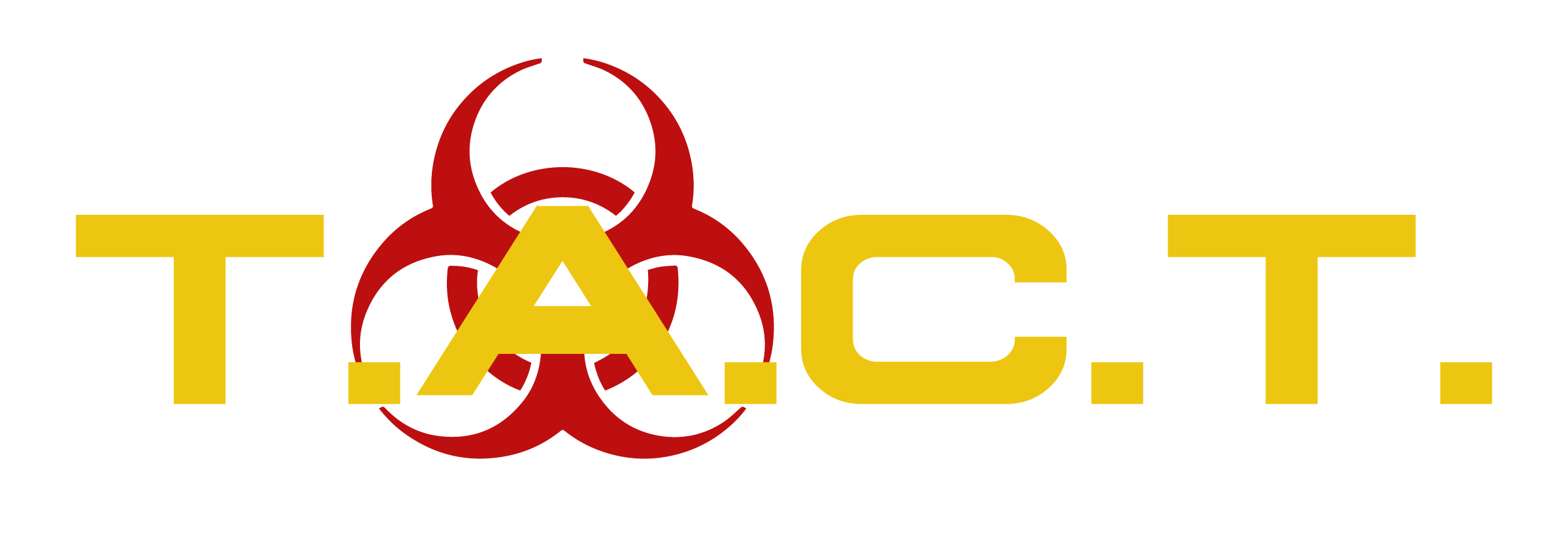Understanding Hantaviruses: Prevention & Protection Guide

Understanding Hantaviruses: A Critical Guide to Prevention and Protection
Hantaviruses represent one of the most serious emerging infectious diseases threatening human health today. These rodent-borne pathogens can cause devastating illness, including life-threatening respiratory failure and kidney damage. While hantavirus infections remain relatively rare, their high mortality rates and sudden onset make understanding prevention and recognition absolutely essential.
This comprehensive guide will equip you with the knowledge needed to protect yourself and your loved ones from hantavirus infection. We'll explore how these viruses spread, the diseases they cause, and most importantly, the proven strategies that can prevent exposure and save lives.
What Are Hantaviruses?
Hantaviruses belong to a family of RNA viruses that primarily infect rodents but can cause severe disease in humans. Hantaviruses are classified within the genus Hantavirus, which includes many species, each associated with distinct rodent hosts.
These pathogens have a complex structure consisting of a lipid envelope with spike glycoproteins that allow the virus to attach to and infect human cells.
The hantavirus genome contains three negative-sense RNA segments (L, M, and S) that encode essential viral proteins for infection. These include the nucleocapsid protein, glycoprotein precursor, and RNA-dependent RNA polymerase. What makes hantaviruses particularly concerning is their remarkable stability—they can survive for extended periods outside of a host, remaining infectious in the environment.
The most dangerous hantaviruses affecting humans include:
Sin Nombre virus - The primary cause of hantavirus pulmonary syndrome in North America
Andes virus - Found in South America, capable of person-to-person transmission
Seoul virus - A global pathogen carried by rats
Hantaan virus - The prototype virus discovered in Korea
Puumala virus - Common in Northern Europe
Dobrava virus - Found in Eastern and Southeastern Europe, primarily carried by the striped field mouse and associated with severe cases of Hemorrhagic Fever with Renal Syndrome (HFRS)
Saaremaa virus - Associated with striped field mice, especially on the Estonian island of Saaremaa, and causes a milder form of HFRS
These viruses cause distinct diseases in humans, with some, like Sin Nombre and Andes viruses, leading to hantavirus pulmonary syndrome (HPS), while others, such as Hantaan, Dobrava, Puumala, and Saaremaa viruses, cause hemorrhagic fever with renal syndrome (HFRS). The disease caused by each hantavirus varies in severity, with Dobrava virus infections often resulting in more severe symptoms and higher fatality rates compared to other strains.
Only hantavirus species are known to cause these specific diseases in humans, and human-to-human transmission is rare, with the Andes virus being a notable exception.
Hantaviruses are found throughout North and South America, as well as in Europe and Asia. While each virus is typically associated with a primary rodent host, such as rats, mice, or striped field mice, other rodents can also serve as reservoirs and contribute to the spread of these viruses.
Hantavirus Structure and Genome
Hantaviruses are enveloped viruses that appear as spherical or oval particles, typically measuring between 80 and 210 nanometers in diameter. Their structure is defined by a lipid envelope studded with spike-like glycoproteins, which are essential for the virus to attach to and enter host cells. At the core of each hantavirus particle lies a tripartite, negative-sense RNA genome, which is divided into three distinct segments: Large (L), Medium (M), and Small (S).
The L segment encodes the viral RNA-dependent RNA polymerase, a crucial enzyme that enables the virus to replicate and transcribe its genetic material within the host cell. The M segment is responsible for producing the glycoprotein precursor, which is subsequently cleaved into two surface glycoproteins, G1 and G2. These glycoproteins are embedded in the viral envelope and play a vital role in the virus’s ability to bind to and invade host cells, setting the stage for infection. The S segment encodes the nucleocapsid protein, which wraps around the viral RNA, protecting it and ensuring proper packaging of the genome during the formation of new virus particles.
A unique feature of hantavirus genetics is the complementary nature of the 5′ and 3′ ends of each RNA segment. These ends base pair to form panhandle structures, which are essential for the virus’s replication and transcription processes. Understanding the structure and genome of hantaviruses is key to developing targeted strategies for disease control and future treatments.
Types of Hantavirus Diseases
Hantaviruses cause two main categories of severe illness in humans, each with distinct characteristics and geographic distributions. Pathogenic hantaviruses are responsible for these severe forms, while other strains may not cause significant disease. Hantaviruses are a significant cause of human disease worldwide.
Hantavirus Pulmonary Syndrome (HPS)
HPS is a devastating disease that primarily affects the lungs and cardiovascular system. Caused by New World hantaviruses like Sin Nombre virus and Andes virus, HPS has an extremely high mortality rate ranging from 30% to 50%.
The disease develops rapidly, characterized by:
Pulmonary edema (fluid in the lungs)
Severe breathing difficulties
Cardiac involvement
Potential for complete respiratory failure
In severe cases of HPS, the lungs fill with fluid, which leads to difficulty breathing and can progress to respiratory failure.
Hemorrhagic Fever with Renal Syndrome (HFRS)
HFRS predominantly affects the kidneys and is caused by Old World hantaviruses such as Hantaan virus and Seoul virus. This condition presents with:
High fever and severe headaches
Abdominal pain
Internal bleeding
Acute kidney failure
Potential cardiovascular complications
Dobrava virus infections are known for causing particularly severe cases of HFRS, with higher rates of internal bleeding, kidney failure, and increased fatality compared to other hantavirus strains.
A related condition, hantavirus cardiopulmonary syndrome (HCPS), combines features of both lung and heart involvement, making it particularly dangerous.
How Hantaviruses Spread
Understanding transmission patterns is crucial for effective prevention. Wild rodents serve as the natural reservoirs for hantaviruses, and rodent hosts maintain a persistent infection with the virus, allowing them to shed virus particles over long periods without showing symptoms. Hantavirus transmission occurs primarily through contact with infected rodents, but the specific mechanisms vary. Conditions that attract rodents, such as the presence of food and shelter, increase the risk of human exposure to hantaviruses.
Primary Transmission Routes
Inhalation of contaminated particles represents the most common infection route. When rodent droppings, urine, or saliva dry out, microscopic particles can become airborne. Breathing these contaminated particles leads to infection.
Direct contact with infected rodents or their excretions through broken skin or mucous membranes can also cause infection.
Bite wounds from infected rodents, though rare, represent another transmission pathway.
Rodent Reservoirs
Different hantaviruses are carried by specific rodent species:
The deer mouse is the primary reservoir for Sin Nombre virus in the United States
Cotton rats and rice rats serve as reservoirs for other hantaviruses, such as the Andes virus and additional dangerous strains
Norway rats and roof rats carry Seoul virus worldwide
The risk of hantavirus infection is significantly higher in rural areas where these rodent populations are more common. Rodent infestation in homes, barns, sheds, and workplaces creates the greatest danger for human exposure.
Human-to-Human Transmission
While rare, person-to-person transmission can occur with certain hantaviruses, particularly Andes virus. This makes some outbreaks particularly challenging to control and underscores the importance of proper isolation procedures in healthcare settings.
Pathogenesis of Hantaviruses
The severe symptoms and life-threatening complications of hantavirus infections stem from the virus’s ability to target and disrupt the body’s vascular system. Once inside the human body, hantaviruses primarily infect endothelial cells, which line the tiny blood vessels throughout organs such as the lungs and kidneys. The interaction between viral proteins and host cell factors leads to increased vascular permeability, allowing fluid to leak from blood vessels into surrounding tissues.
In hantavirus pulmonary syndrome (HPS), caused by viruses like Sin Nombre virus and Andes virus, the infection of lung endothelial cells results in pulmonary edema—fluid accumulation in the lungs—which can rapidly progress to respiratory failure. The Andes virus is particularly concerning due to its capacity for person-to-person transmission, making it a significant threat in outbreak scenarios. HPS patients often require intensive care and mechanical ventilation due to the rapid onset of severe disease.
Hemorrhagic fever with renal syndrome (HFRS), associated with Seoul virus and other Old World hantaviruses, targets the kidneys. Infection of renal endothelial cells leads to acute kidney failure, internal bleeding, and a dangerous drop in platelet count. This form of hantavirus disease, sometimes referred to as fever with renal syndrome, can cause serious illnesses and long-term kidney function impairment.
The pathogenesis of hantavirus infections is complex, involving a cascade of immune responses and the action of multiple viral proteins. The resulting vascular leakage and organ dysfunction are what make these emerging infectious diseases so deadly and difficult to treat.
Recognizing Hantavirus Symptoms
Early recognition of hantavirus infection can be lifesaving, but symptoms often mimic common illnesses, making diagnosis challenging. In the early stages of hantavirus infection, individuals may experience flu like symptoms, which can make it difficult to distinguish from other illnesses.
Early Stage Symptoms
The initial phase of hantavirus infection typically begins 1-5 weeks after exposure and includes:
High fever and chills
Severe headaches
Muscle aches, particularly in the back and thighs
Nausea and vomiting
Diarrhea
General fatigue and weakness
Progressive Symptoms
As the disease advances, more serious complications develop:
Abdominal pain
Difficulty breathing
Rapid heart rate
Low blood pressure
Fluid accumulation in the lungs
Critical Stage
In severe cases, patients may experience:
Complete respiratory failure
Cardiac arrest
Shock
Multi-organ failure
The progression from initial symptoms to critical illness can occur within hours, making immediate medical attention essential for anyone with potential rodent exposure who develops these symptoms.
Effective Prevention Strategies
Prevention remains the most effective approach to hantavirus protection. Comprehensive prevention requires addressing both rodent control and personal protection measures.
Rodent Control and Exclusion
Sealing entry points represents the first line of defense. Inspect your property thoroughly for any gaps or holes larger than 1/4 inch. Use steel wool and caulk to seal these openings, paying particular attention to:
Areas around pipes and utilities
Foundation cracks
Gaps under doors
Ventilation openings
Roof eaves and attic spaces
Eliminating food sources removes the attraction for rodents. Store all food in sealed, rodent-proof containers made of metal or thick plastic. Clean up crumbs and spills immediately, and ensure pet food is properly stored.
Removing shelter opportunities makes your property less hospitable to rodents. Clear brush, tall grass, and debris from around buildings. Store firewood at least 100 feet from structures and elevate it 18 inches off the ground.
Safe Cleanup Procedures
When cleaning areas with potential rodent contamination, proper procedures are essential:
Ventilate the area by opening doors and windows for at least 30 minutes before entering.
Wear protective equipment including rubber or plastic gloves, eye protection, and N95 respirators or higher-grade masks.
Disinfect before cleaning by spraying contaminated areas with a bleach solution (1 part bleach to 10 parts water) and allowing it to sit for 5 minutes.
Avoid sweeping or vacuuming which can stir up infectious particles. Instead, use damp methods to clean surfaces.
Handle dead rodents carefully by soaking them with disinfectant, placing them in plastic bags, and disposing of them according to local regulations.
Handling Dead Rodents
Safely handling dead rodents is critical to preventing hantavirus infection, as even a dead rodent can harbor infectious virus particles. Always wear rubber or plastic gloves when dealing with a dead rodent to avoid direct contact with potentially contaminated body fluids. Before removal, thoroughly soak or spray the rodent and the surrounding area with a disinfecting solution, such as diluted household bleach, to neutralize any virus present.
Carefully place the dead rodent in a plastic bag, seal it tightly, and dispose of it in a trash container with a secure, tight-fitting lid. After handling the dead rodent, wash your gloved hands with household disinfectant or soap and hot water. Once you remove the gloves, wash your hands again with soap and warm water to ensure any lingering virus is removed. It’s equally important to clean and disinfect any surfaces or materials that may have come into contact with the dead rodent, using a bleach solution or phenol-based disinfectant. By following these steps, you can significantly reduce the risk of contracting this deadly disease and help prevent the spread of hantavirus infection in your home or workplace.
Personal Protective Equipment
Proper PPE is essential when working in areas with potential rodent exposure:
Gloves: Use rubber or plastic gloves, never fabric or leather
Eye protection: Safety goggles prevent splash contamination
Respiratory protection: N95 masks or higher-grade respirators filter infectious particles
Clothing: Wear long sleeves and pants that can be laundered in hot water
Professional Treatment and Medical Response
Currently, no specific antiviral treatment exists for hantavirus infections, making supportive care the cornerstone of treatment. This is especially important because hantavirus infections can trigger a strong immune system response, which often contributes to the severity of the disease.
Diagnostic Approaches
Healthcare providers diagnose hantavirus infection through:
Clinical presentation assessment
Laboratory tests detecting antibodies or viral RNA
Epidemiological history including rodent exposure
Chest imaging showing characteristic lung changes
Treatment Strategies
Medical treatment focuses on supporting vital organ functions:
Mechanical ventilation for respiratory failure
Dialysis for kidney failure
Fluid management to maintain blood pressure
Intensive monitoring of cardiac function
While ribavirin has been used experimentally in some cases, its effectiveness remains unclear. Early recognition and aggressive supportive care provide the best outcomes for patients.
Public Health Response and Management
Effective hantavirus prevention requires coordinated public health efforts at multiple levels.
Surveillance Systems
Public health agencies monitor hantavirus through:
Tracking rodent populations and infection rates
Investigating suspected human cases
Environmental sampling in high-risk areas
Laboratory testing and confirmation
Community Education
Public awareness campaigns focus on:
Teaching recognition of early symptoms
Promoting proper rodent control methods
Demonstrating safe cleanup procedures
Encouraging prompt medical attention for suspected exposures
Outbreak Response
When hantavirus cases occur, rapid response includes:
Identifying the source of infection
Implementing immediate control measures
Providing medical care to affected individuals
Coordinating between healthcare providers and public health officials
Future Directions and Research
Scientific research continues to address critical gaps in hantavirus prevention and treatment.
Vaccine Development
Researchers are working to develop effective vaccines against major hantaviruses, though none are currently available for routine use.
Improved Diagnostics
Enhanced testing methods could enable faster diagnosis and earlier treatment initiation.
Treatment Advances
Scientists are investigating new antiviral compounds and therapeutic approaches that could improve survival rates.
Ecological Research
Understanding rodent ecology and virus transmission patterns helps inform more effective prevention strategies.
Protecting Your Health and Community
Hantaviruses pose a serious but preventable threat to human health. While these infections can be devastating, proper prevention measures significantly reduce risk. The key lies in understanding how these viruses spread and implementing comprehensive protection strategies.
Remember that hantavirus prevention requires ongoing vigilance. Seasonal rodent population changes, weather patterns, and human activities all influence exposure risk. Stay informed about hantavirus activity in your area, maintain effective rodent control measures, and seek immediate medical attention if you develop symptoms after potential rodent exposure.
By taking these precautions seriously and sharing this knowledge with others, we can work together to prevent hantavirus infections and protect our communities from these dangerous pathogens.
Meta data
Meta title
Understanding Hantaviruses: Prevention & Protection Guide
Meta description
Learn how to prevent deadly hantavirus infections. Comprehensive guide covering symptoms, transmission, rodent control, and life-saving prevention strategies.



